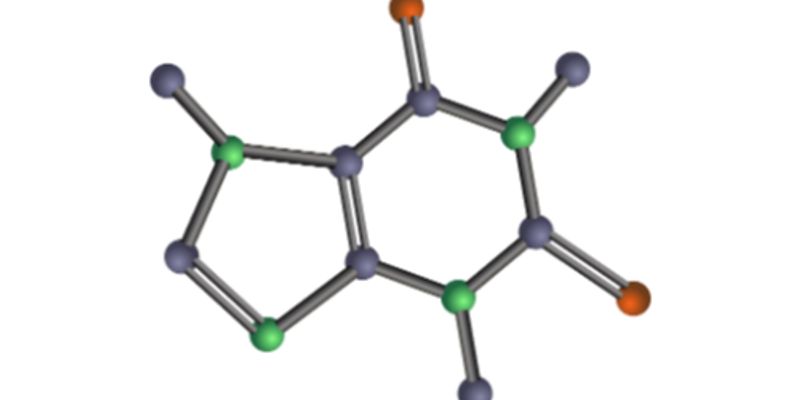Dimer
A Dimer is a pair of monomers, classified as an oligomer that creates a bond that is weak or strong. The molecular complex can either be covalent or intermolecular. A homodimer occurs when two molecules are identical. Conversely, a heterodimer occurs when two molecules are not identical.
-
APR 28, 2023 | 12:00 AMC.E. CREDITSHeparin-Induced Thrombocytopenia (HIT): Practical Aspects of Clinical and Laboratory Diagnosis Heparin-Induced Thrombocytopenia (HIT) is a life-threatening complication following heparin exp...Speaker: Jerrold Levy. MD, FAHA, FCCMAPR 24, 2023 | 12:00 AMC.E. CREDITSCoagulation tests are useful in the diagnosis and management of bleeding or thrombotic disorders. The majority of hospital and reference laboratories perform routine coagulation testing such...Speaker: Santosh Kadel, DCLS, MS, CC(NRCC), MLS(ASCP)CMFEB 22, 2023 | 1:00 PMC.E. CREDITSHeparin-Induced Thrombocytopenia (HIT) is a life-threatening complication following heparin exposure. This webinar presentation will discuss the pathogenesis, incidence, clinical...Speaker: Long Zheng, MD, PhDOCT 13, 2022 | 1:00 PMC.E. CREDITSThe diagnosis of venous thromboembolism (VTE) is challenging during pregnancy. Pregnant women often present with symptoms compatible with VTE. The use of conventional diagnostic algorithms is...Speaker: Grégoire Le Gal, MD, PhDSEP 07, 2022 | 1:00 PMC.E. CREDITSGetting It Right: Preanalytical Impact on Coagulation Results Using a Case Study Approach According to published literature, up to 65% of errors occur in the preanalytical phase of laborator...Speaker: Michael Gulseth, Pharm.D., BCPS, FMSHP, FASHPJUN 02, 2022 | 8:30 AMDate: June 02, 2022 Time: 8:30am (PST), 10:30am (CST), 11:30am (EST) Cardiac biomarkers like high-sensitivity Troponin I might play a major role in the prevention of cardiovascular diseases....According to published literature, up to 65% of errors occur in the preanalytical phase of laboratory testing, and coagulation assays are particularly sensitive to preanalytical issues......Speaker: Donna Castellone, MS, MASCP, MT(ASCP) SH
APR 25, 2022 | 12:00 AM
C.E. CREDITS
The Patient is Bleeding: Balancing Clinical and Laboratory Needs Coagulopathy in the bleeding surgical patient can get worse by the second! One of the real-world operational challenges......
Speaker:
Oksana Volod, MD
Perhaps more than any other area of clinical medicine, anticoagulation management laboratory data are evaluated hourly by healthcare systems in the inpatient setting and daily in the outpatie...
Speaker:
James Groce, Pharm.D., CACP
The Patient with Venous Thrombosis - Practical Points for the Labor Diagnosis of deep vein thrombosis and pulmonary embolism, collectively referred to as...
Speaker:
Stephan Moll, MD
Lupus anticoagulants and antiphospholipid syndrome: Resolving confusion, providing new guideline updates...
Speaker:
Thomas Ortel, MD, PhD
ASH Anticoagulation Guidelines in Patients with COVID-19: A moving target The American Society of Hematology (ASH) published in February 2021 “Anticoagulation Guidelines in Patients wi...
G protein-coupled receptors (GPCRs) are among the most intensively studied drug targets, and account for about ~34% of all drugs approved by the FDA. Examples of drugs targeting GPCRs includ...
Speaker:
Annette Gilchrist, PhD
, Professor Kevin Pfleger, MA, PhD, FBPhS
, Juan José Fung, PhD
, Aarti Kawatkar
, Yamina A. Berchiche, PhD
, Ajay Yekkirala, PhD
Presented at: Drug Discovery & Development Virtual Event Series 2021
Date: September 16, 2020 Time: 7:00am (PDT), 10:00am (EDT) Of the 15 million patients admitted to US based hospitals with medical, non-surgical illnesses, 8 million possess inherent risk of...
Speaker:
Alex Spyropoulos, MD, FACP, FCCP, FRCPC
Viruses are the causative agents of approximately 12% of human cancers. The most recently discovered herpesvirus, Kaposi’s sarcoma herpesvirus (KSHV) is known to cause three human canc...
























